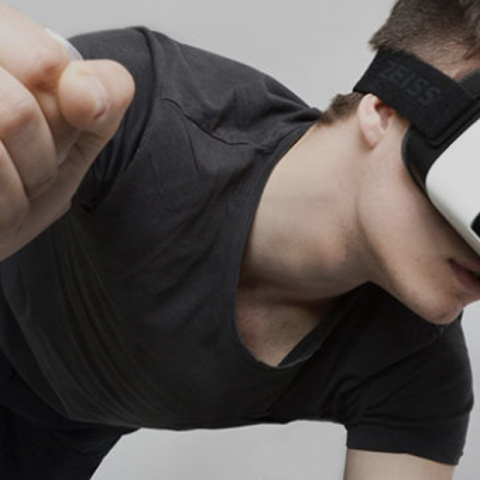Functioning and believable virtual reality has long been a hallmark of science fiction, but as technological breakthroughs continue to happen at a rapid rate, what once seemed like a pipe dream, now feels achievable in the real world. There are notable examples of virtual reality being used effectively right now, particularly in the field of medicine, and it’s begun to crossover into other industries. With the technology possessing so much potential, it was only a matter of time before it appeared in a gym.
In June 2015, Pure Fitness, a Hong Kong-based gym, invested just over £250,000 on what it dubbed “Immersive Fitness”. The concept blends together a purpose-built studio with a 270-degree VR screen; the aim is to deliver unique spinning class experience.
Essentially, exercisers are thrust into a virtual world as they workout, with movements on the bike synchronised with the music and graphics on screen. As the class unfolds, exercisers find themselves cycling up a snowy mountain pass in the Himalayas and racing through the streets of a metropolitan city. Visuals can also get very abstract, including a trip off into space. On top of this, virtual cyclists appear on screen, which adds a layer of competition to the experience.
Pure Fitness are by no means the first to employ virtual reality for the purposes of exercise. In fact, companies have been experimenting with the idea for several years now. One notable example is Oculus VR, who have been recently acquired by Facebook for $2bn. Their head-mounted display unit, named the Rift, features two small screens, one for each eye. As well as being incredibly immersive, the unit also has the ability to track head movement, meaning if you physically look up, the view in the headset changes accordingly. Runstastic, developer of several popular fitness apps, used the Oculus Rift to create a prototype exercise experience. With the headset on, the user is invited to follow along with a virtual trainer, performing a range of squats, lunges and other movements. The company even has plans to add yoga workouts in the future.
There’s clearly room to implement VR into fitness, and those currently working on projects are keen to champion the positives. Colin Grand, CEO of Pure Group spoke about one possible benefit: “What this technology is going to do is open exercise to maybe a younger crowd”. That could prove momentous, especially considering the meteoric rise in child obesity. The gamification aspects of the technology could also become a draw for those who would normally shy away from the gym or exercise in general. Accumulating points for performing exercises, beating a high score, racing past a virtual opponent on your exercise bike, could all serve to inject a tangible element of fun to working out.
As with any new advancement in technology, there are always going to be detractors and flaws that need to be ironed out. The elephant in the room with Immersive Fitness is clearly the immense cost. There will be very few gym chains at present willing to invest that amount of money for a virtual reality screen/studio. If companies do begin to adopt this technology, they’ll obviously look to recoup the cost as quickly as possible. This could lead to the price of VR classes, or worse still gym memberships sky rocket.
Another potential downside, one that’s been especially highlighted by personal trainers, is that the hands-on, personal touch is lost with VR. Personal trainers and clients build up immense rapport and to strip that away could prove detrimental to a client’s motivation and overall ability to achieve goals.
Similarly, there are plenty of forms of exercise that may simply not work in a VR setting. Runstastic may be keen to bring yoga to their prototype, but wearing a headset that obscures the view of your body means your posture and alignment could suffer – there’s also the risk of injury if moves are performed wrong. Yoga and pilates workouts on YouTube remain incredibly popular, but there’s a reason so many attend classes in person, and it’s not just for the sense of comrade, but also to ensure you’re doing the instructed exercises correctly.
Virtual reality clearly isn’t going anywhere fast, but with such high barriers to entry, it’s unlikely that VR screens on Pure Fitness’ scale will be appearing nationwide any time soon. However, as the technology becomes better developed and more affordable, it could easily be used to serve the greater good. As with any new piece of technology, the true mark of VR’s success in the fitness industry will be if it provides an experience greater and more beneficial than if it wasn’t there at all.


